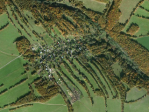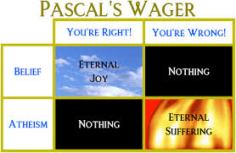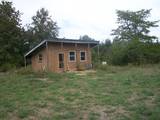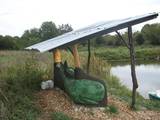Direct action is when you just go and dig your own well [when water is privatized]. Direct action is a matter of acting as if you were already free.
— David Graeber
After describing the Dancing Rabbit community as it appeared to us visitors, I offer a few additional observations and musings. (Floating your mouse over pictures will show the descriptive text.)
Using the body as it’s meant to be used
I loved being physical, always walking and outside every day, all the time. People are in motion; it is impossible to be sedentary. Everything takes more effort at DR; I was noticing how even small differences require more “work” — like peeing outside. It adds up to greater fitness, a more limber body, one motion at a time. When did Babylon switch from helping us past some drudgery to pushing us toward exertion-free life? The two are very different; one is helpful, the other… not so much.
State of the land

It was only after living at DR that I finally grokked the scope of land damage in the Midwest. The reason that their county provides tapwater to all residents is that water — in this humid part of the country! — is hard to find and of poor quality. Rains are lost to runoff instead of soaking into the topsoil and staying there — because little topsoil is left. The USDA program pays farmers to keep the land fallow, but that only prevents further major degradation through plowing; it neither stops the erosion nor does it help the land regenerate.
DR has been trying for years to restore several acres of tall grass prairie. They have repeatedly burned and reseeded the area; Jack from Red Earth was critical of this approach. Regenerating prairie without the grazers may be a tedious exercise in never-ending human management.
Fruit trees in DR are thriving. They have a tree committee that cares for them, and lets the people know when fruit is ready to pick, and how much each person can take. But the seedling trees that had been planted far out on the land have suffered from the drought, and many are dead despite the mulch and plastic shields for protection from the elements.

Old fashioned resilience
One day, as I was coming back home, I saw my “landlords” butchering roosters next to the cob house. It did me good to see April — a young woman of lovely delicate features whom I can easily see in my mind’s eye surrounded by the blandishments of Babylon — running around covered in blood and guts, showing the DIY spirit of recapturing the old skills that permeates DR. I tried to talk them into cooking the chicken feet too — no luck there yet (I keep trying).
Haley, a budding farmer from Montana, kept a couple of sheep this past summer, and after the Mennonites came from Rutledge to butcher them on the land, she proceeded to stretch the skins on a wooden frame, and to tan them with brains and egg yolks. I felt then like I was witnessing another American revolution: people falling in love with the old self-reliant ways, and throwing themselves enthusiastically into relearning them.

Creep of the loud, the lit, and the oblivious
While DR is still mostly dark, there is progressive evidence of more and more outdoor lights. The Rabbits seem particularly fond of strings of Christmas lights which they happily festoon here and there, on houses or inside. While Babylon wages war on the night, in DR it is rather a slow creep, where light trespass from big windows goes unheeded, electricity use no longer has to be restrained, and outside flood lights are making their appearance. On the level of noise, it is still a peaceful place — except for the trains which rumble and honk not too far away at all hours. The small wind turbines create a constant, soft hum overhead.
There is concern among the Rabbits that now the community is on the grid, the former hard-wired limits — like having to attend to electricity usage — are disappearing, and there seems to be a slippery slope in the direction of more gadgetry, inching toward the mainstream. It occurs to me that the big problem with running water and electricity is not that we have it, but that the mode of delivery allows us — even encourages us — to be oblivious not only to wastage, but also to the overcomplex, hidden, vulnerable and damaging cycles that make such delivery possible, and to the subtle effects of all this on the community.
Politics
Most of the focus at DR naturally goes toward internal politics: learning about consensus, practicing it, and running the community via the 6-monthly planning process, the monthly plenaries and the committee structure that supports them. External politics does exist but not in a regional sense; the Rabbits see themselves as playing an important role of enlightening outsiders and showing that more energy-sustainable communities do not have to be “primitive” but can have all sorts of modern amenities and even luxuries. There are some connections to the tiny town of Rutledge and to the area Mennonites, but it does not seem to be important enough to work it into the governance structure of DR. Surely creating a larger, regional alliance will turn out to be crucial once economic localization kicks in earnest?
As of late, metapolitics has been given prominence by a campaign of some members who have pushed for greater power-equalization. Several workshops with outside facilitation have been organized to deal with “power dynamics” and people reported to me they feel it’s already helping. We visitors were not allowed into the power dynamics workshop going on one weekend, so I have no details as yet. But my sense is that the Rabbits are ahead of many communities by giving this issue the attention it surely deserves, and growing the skills needed.
Hygiene
The DR settlement is really one huge construction site, but there is quite a bit of an effort to keep things reasonably tidy. And every Sunday morning, people pitch in with cleaning the community house. Hygiene? Well, I came to DR already sick with an obstinate intestinal bug I had caught at Possibility Alliance, so I was pretty sensitive to the passage of germs. I had also caught a cold at PA which I had taken home with me, and that actually turned out to be a good thing, because that same virus was making its rounds at DR when I got there, and I was blissfully immune. The truth is, a community of people living with so much contact with one another is one big party for the germs. And holding hands before eating does not help. I countered with lots of handwashing but that means little if you are forced to hold hands even when an infection is passing through the community, and the utensils are handled by everyone as people line up for food.
When we visited Sandhill for a two-community potluck, one of the people there was just at that blubbering and zizzing height of his cold; this did not keep him from mingling with the large group, nor from holding hands in the circle and sneezing around the food-laden table. That night, I reached my limit: gross-out! As for cleanliness, there was a real effort, but with so many people using the facilities, and life being so indoor/outdoor permeable, it’s a struggle to keep things clean. Don’t expect the kind of clean to which we are accustomed in the outside world. Overall, though, cleanliness was not a major problem for me at DR. It might be for someone who is a real neatnik.
Sandhill
One afternoon we walked to the Sandhill community, three miles away. The land there has a different feel; plenty of woods, almost park-like in places, and real orchards; extensive gardens and well cared for fields are covered by sorghum straw in the fall. Sustainability at Sandhill has not focused on the use of fossil fuels; the main effort has gone into eking out a good living out of the land. They have a large motorized set-up for extracting and boiling down sorghum syrup, and sell it to the other communities in the area, as well as to the outside market. It turns out that sorghum production in Missouri has dwindled as small farms have dwindled; Sandhill serves the market for old-fashioned organic foods.
This peaceful community houses 7 permanent residents in three different buildings. Work exchangers come in the summer, many volunteers come during the sorghum season. They also grow potatoes, wheat, corn and soybeans in quantity. Residents share their income; two people work off the farm intermittently, and the rest of the income comes from produce. In addition, they run the Federation of Egalitarian Communities. Sandhill’s woods provide some building material for DR, and wild persimmons add exotic flavor to tasty pies. Sandhill has a strong commitment to the land, and the signs of it are everywhere. A lovely well-run place.


Red Earth
Red Earth Farms, a direct neighbor of DR, split the land into 7 homesteads; one of them is still available. I was told that the Red Earth people broke off from DR because they wanted to run homesteads without having to go to meetings all the time.

I recall most the establishment of our excellent tour guide, Jack, whose family until recently lived in a very large tent, and who is still finishing the house. It was obvious that he had started with the commitment to make a living off the land, and he is familiar with running livestock over the pastures to improve the soil. He showed us an electric-fenced paddock where most of the animals were, clustered together with two dogs to protect them at all times. They were nibbling down a very overgrown and neglected area next to a wash; once they were done — the goats eating poison ivy and creepers, the pig rooting out weed roots, and the rest grazing down the overgrowth so that fresh grasses can grow — he would move them over to the next area to be regenerated. The undulating, green land was a pleasure to behold. The difference between carefully grazed land and ungrazed at Red Earth (or DR) stands in stark relief: green, lush grasses vs dead weeds with grass clumps trying to poke through.

Village design
The Rabbits say that they are modeled on the European village. This is only accurate in the sense that the dwellings are all clustered together. I think it would be truer to say they are modeled on early 20th century American suburbia. Small houses close by, a shed, and a bit of land to play with, walkable and community-minded; it reminded me of the “garden city” utopias of that time. Originally, the idea was to have themed neighborhoods, but this would have encouraged sprawl on the land and so was abandoned. I very much regretted this; I wondered aloud if a more primitivist (low gadget) neighborhood would be welcome, and was told this is not really doable. There is a trend, however, toward clusters of small houses around a courtyard, with a shared kitchen and dietary preferences.
The community of Red Earth Farms was created next door by dissidents of this vision — they wanted to permaculture-farm according to personal initiative, without having to wait for endless meetings to ok every step. So they sliced the land up, American style, into several disjointed parcels. Each lessee presents a proposal to the community which is then attached to the lease, and after that, each family does its own thing.
In contrast, the European villages I know begin not with the dream of a house, but with the commitment to make a living from the land. A village starts with the ‘homesteading mind’ — with commitment to soil and landbase and critters, integrating humans into the land’s ecology. The early settlers created adjacent homesteads with the houses very close together, while each holding stretches back in a narrow strip where the utility buildings, gardens and orchards are located. Small fields separated by hedges and grassy margins follow. There are two patterns that predominate in central Europe: the ribbon pattern, and the circular ray pattern.


I wonder: if the settlers of Red Earth Farms had been aware of the radial pattern, would they have been interested in creating a hamlet centered roughly in the middle, with each homestead raying out? When we did the Red Earth tour, Jack was stumped by my question as to why they did not build close together. My impression was that they were simply unacquainted with the possibility, and so did what Americans do. One of my fellow visitors commented that perhaps they wanted more privacy from each other. I just don’t know, and see it as an opportunity missed: they could have had the neighborliness of a hamlet along with homestead independence.
The DR land use planning committee has a design for the town, and future road loops for more neighborhoods. A new community house, much larger, will be at the center, plus a game field. They expect to accommodate maybe 300 people on the current land. If growth continues, more land will be bought. The development surrounding the community house will be dense, with shops, and people living upstairs above them.
Early design flaws?
Several chicken flocks live contained in small (fairly cramped) chicken-tractor type of coops. People’s house gardens are unprotected; complaints have blocked free ranging chickens. You either have to confine the chickens, or fence in the gardens; an issue that is difficult to correct later on. In European villages, chickens range freely on each fenced homestead; being close to living quarters and stables — as well as being within the village proper — protects them from predators. (Free ranging chickens on isolated homesteads are far more vulnerable.)
Early DR settlers were drawn there primarily for the natural building experience. And natural building itself was motivated by the desire to provide highly affordable shelter accessible to anyone, using site and nearby materials. This vision seems to be fading at DR, as tiny cheap houses are largely non-existent, and overpriced houses proliferate. Not only does this seem to counter the original vision, but it also buttresses the stratification of DR society: the division into those who can afford fairly fancy buildings, and those who can’t, and end up tenting it or living in very uncomfortable conditions in other makeshift shelters. The situation is complicated by the skilled builders’ pressure to make “good wages.” This might be a “type 1 design error”; bringing Babylon’s economic system with you wherever you go.
A few customs
DR has very sensible pet rules, where one cat or dog can be added to the community per so many people. Cats need to be kept indoors during the nesting season. Everyone shows kindness to the few dogs and cats running around.
Men cook. All the time. Yey!
The Rabbits are heavily invested in promoting good relationships. A conflict resolution committee has the power to insist on mediation when a conflict develops and begins to affect the community at large. Reflective listening is taught (listening without putting your own story on it). The other tools they use are as follows: restorative circles, NVC, and doing your own personal work which can take many forms and is aided through workshops, support groups and private practitioners offering their services.
Holidays? Halloween is big at DR, with a procession going from house to house, and each house they visit does a skit or a ride or some other surprise. Thanksgiving means a huge community meal. Solstice is celebrated by some, privately. Christmas is ignored.
The people at DR are friendly and helpful. Part of the reason for the friendliness is that visitors are wooed, seen as the source of future growth. And partly, it is truly a neighborly place, where everyone walks everywhere, children run in kidpacks, safe and off to their kid adventures, and everybody makes frequent contact with others. We were of course cautioned to respect people’s privacy and not to assume they necessarily want to talk to us at that particular time, or have their pics taken.
DR does not have any community work requirements, apart from being expected to serve on at least one committee. Large community-wide projects needing people’s time are announced as needed, and people get paid for the hours given.
Sharon’s and Dennis’ house
I will close by telling you about a magical house being built by an older couple at DR. The house’s “bones” are made of round logs and wood & peg joinery, and large chunks of urbanite serve as the foundation. The roof, covered by a plastic membrane, will some day sprout a vegetable garden. Walls of straw bale and plaster will complete the structure. My amazement came from the way they are building — it reminded me of the way cathedrals were once built, one large stone, one massive beam at a time, with hand tools and lots of patience. A timeless way of building; each piece placed just right is a joy. When I first saw it, I was thinking “true dedication,” but those are not the right words. This is more than a building philosophy; it is a certain way of life embodied. Craftsmen unhurried in the flow of generations. I stood before that rising house humbled and awed.
A thing of beauty is a joy for ever:
Its loveliness increases; it will never
Pass into nothingness; but still will keep
A bower quiet for us, and a sleep
Full of sweet dreams, and health, and quiet breathing.





































